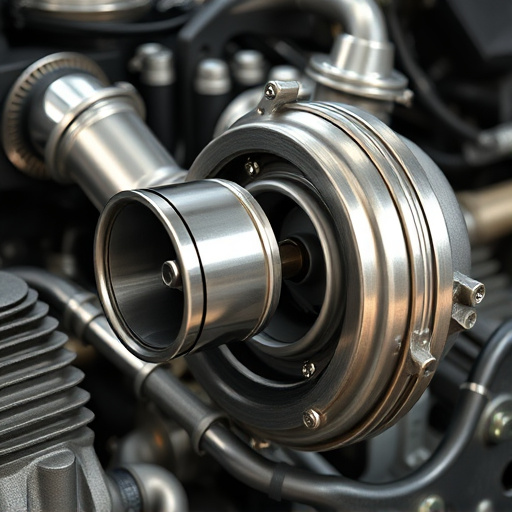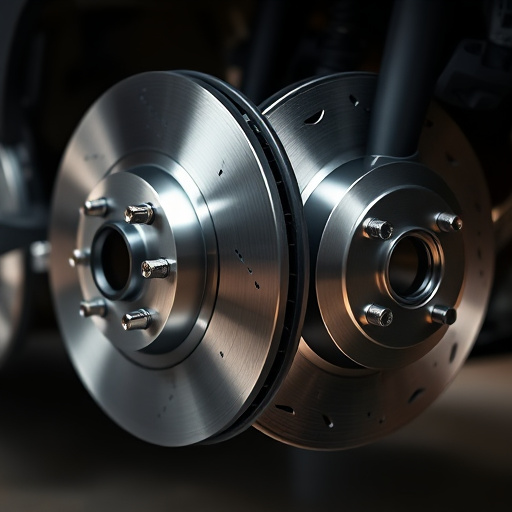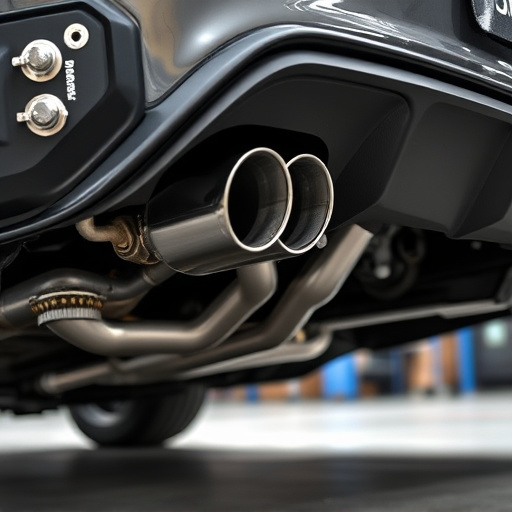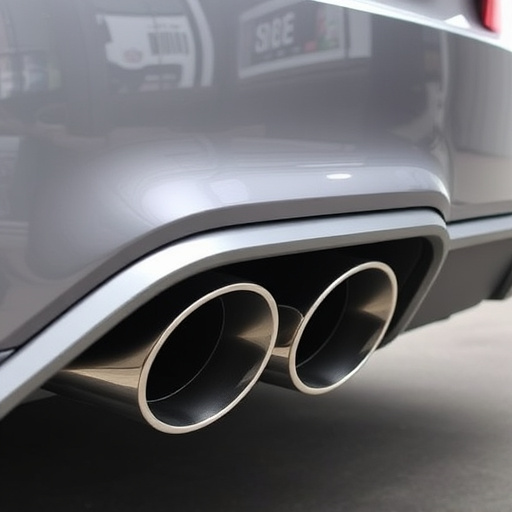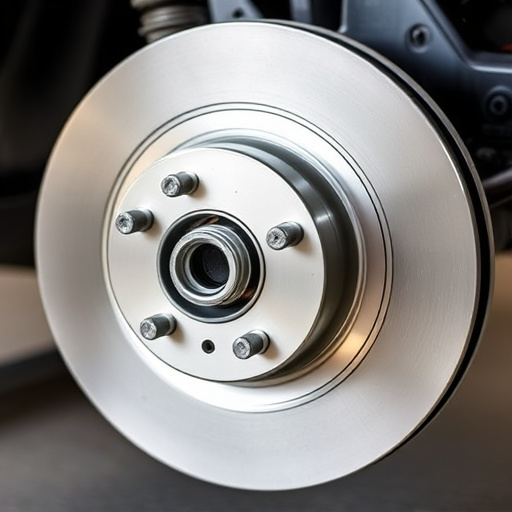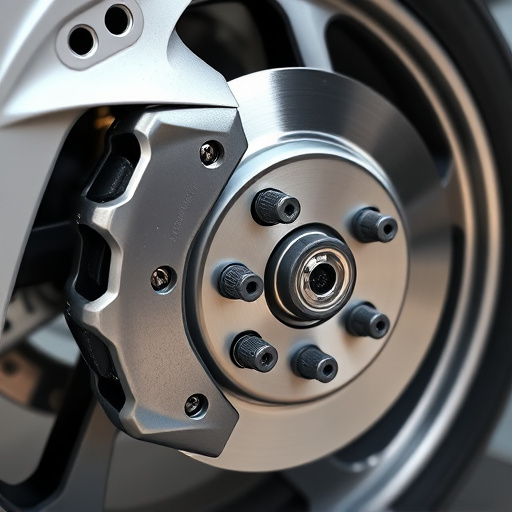The car suspension system is a vital component that significantly affects vehicle handling and performance. It includes springs, shock absorbers, control arms, ball joints, and struts, working together to absorb road shocks and maintain stability. An efficient suspension system provides a smooth ride, improves cornering and braking efficiency, and minimizes air intake turbulence, enhancing overall engine performance. Types like double wishbone suspensions offer superior control for performance vehicles, while advanced dampers and adjustable coil overs can further improve stability and reduce body roll, ensuring a responsive, agile, and safe driving experience.
The car suspension system is a critical component that significantly impacts vehicle handling and overall driving experience. This intricate network of springs, shocks, and control arms not only absorbs road imperfections but also plays a pivotal role in how a car navigates turns and responds to driver inputs. Understanding the fundamentals of suspension systems and their various types is key to unlocking optimal vehicle performance and stability. In this article, we’ll explore these aspects in detail.
- Understanding Car Suspension Systems: The Basics
- How Suspension Influences Vehicle Handling and Stability
- Optimizing Performance: Different Suspension Types and Their Effects
Understanding Car Suspension Systems: The Basics
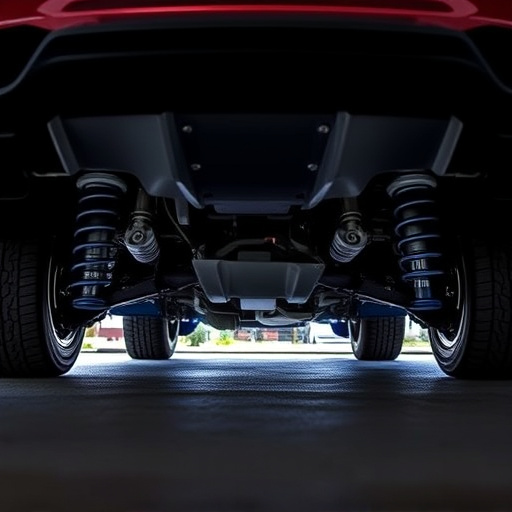
Car suspension systems are a crucial component that significantly impacts vehicle handling and overall performance. At its core, a suspension system is designed to connect the car’s wheels to the chassis while allowing for movement and absorbing shocks from the road surface. This intricate network of components includes springs, shock absorbers (or dampers), control arms, ball joints, and struts (or coil-over units). These parts work in harmony to ensure a smooth ride, maintain vehicle stability, and enable accurate steering control.
Understanding how these suspension components interact is key to grasping their impact on handling. For instance, springs provide the necessary force to return the wheels to their optimal position after encountering a bump, while shock absorbers control the speed of this movement, smoothing out jerks and vibrations. Additionally, the alignment of brake components, such as brake rotors and pads, also falls under suspension considerations as it affects how the car slows down and corners. Efficient air intake systems, too, benefit from well-designed suspensions by ensuring minimal turbulence that could disrupt airflow and engine performance during high-speed driving or aggressive cornering.
How Suspension Influences Vehicle Handling and Stability
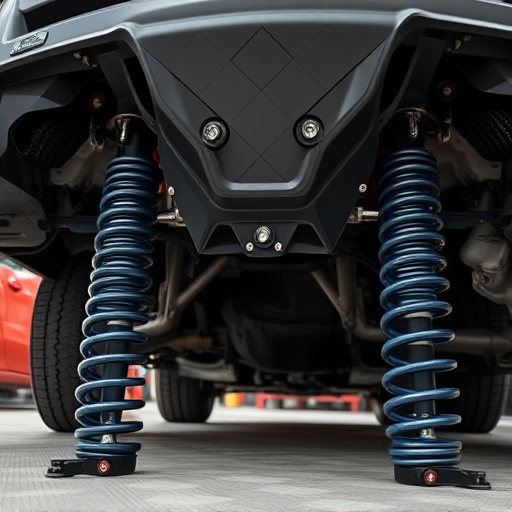
The car suspension system plays a pivotal role in dictating how a vehicle handles and stabilizes on the road. It acts as the intermediary between the terrain beneath and the vehicle’s cabin, ensuring a smooth ride and responsive driving experience. The primary function of this system is to absorb and distribute the impact of uneven surfaces, thereby preventing excessive roll or pitch during cornering or over speed bumps.
Effective suspension systems optimize vehicle stability by carefully managing grip levels and body motion. They do this through various components like springs, shock absorbers, and control arms, which work in harmony to maintain optimal tire contact with the road surface. This is particularly crucial when navigating tight turns or high-speed corners, where precise handling and stability can be a matter of safety and performance, influencing not just the car’s agility but also its overall driving dynamics, including braking components, air intake systems, and exhaust mufflers.
Optimizing Performance: Different Suspension Types and Their Effects
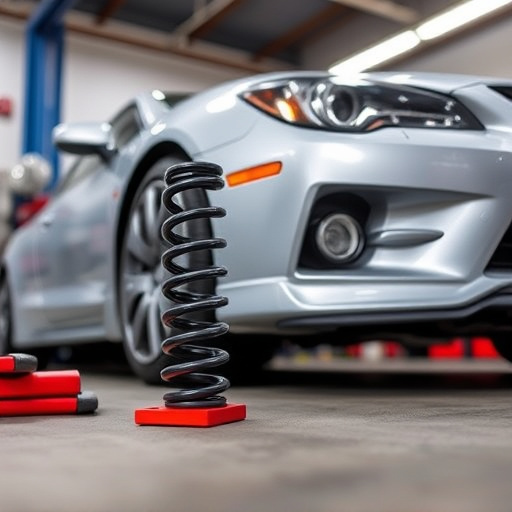
The car suspension system plays a pivotal role in determining a vehicle’s handling dynamics and overall driving experience. Different types of suspensions offer unique advantages tailored to specific driving styles and conditions. For instance, double wishbone suspensions provide exceptional control and precision, making them popular among performance-oriented vehicles. This setup allows for independent wheel movement, enhancing cornering abilities and ensuring each wheel responds optimally to the driver’s inputs.
Optimizing performance further, high-performance parts like advanced dampers and adjustable coil overs can be integrated into various suspension types. These upgrades significantly improve stability, reduce body roll, and enhance braking effectiveness, especially when paired with powerful performance brakes. The interplay between these components contributes to a more responsive and agile driving experience, allowing drivers to push their vehicles to new limits while ensuring safety and control.
A car’s suspension system is a critical component that significantly impacts vehicle handling, offering a balance between comfort and stability. By understanding the fundamentals of suspension design and its various types, drivers can optimize their driving experience. Different suspension setups cater to diverse driving styles and terrain conditions, ensuring enhanced control and improved overall performance. Thus, investing time in researching and selecting the right suspension system for your vehicle is key to navigating roads with precision and confidence.






